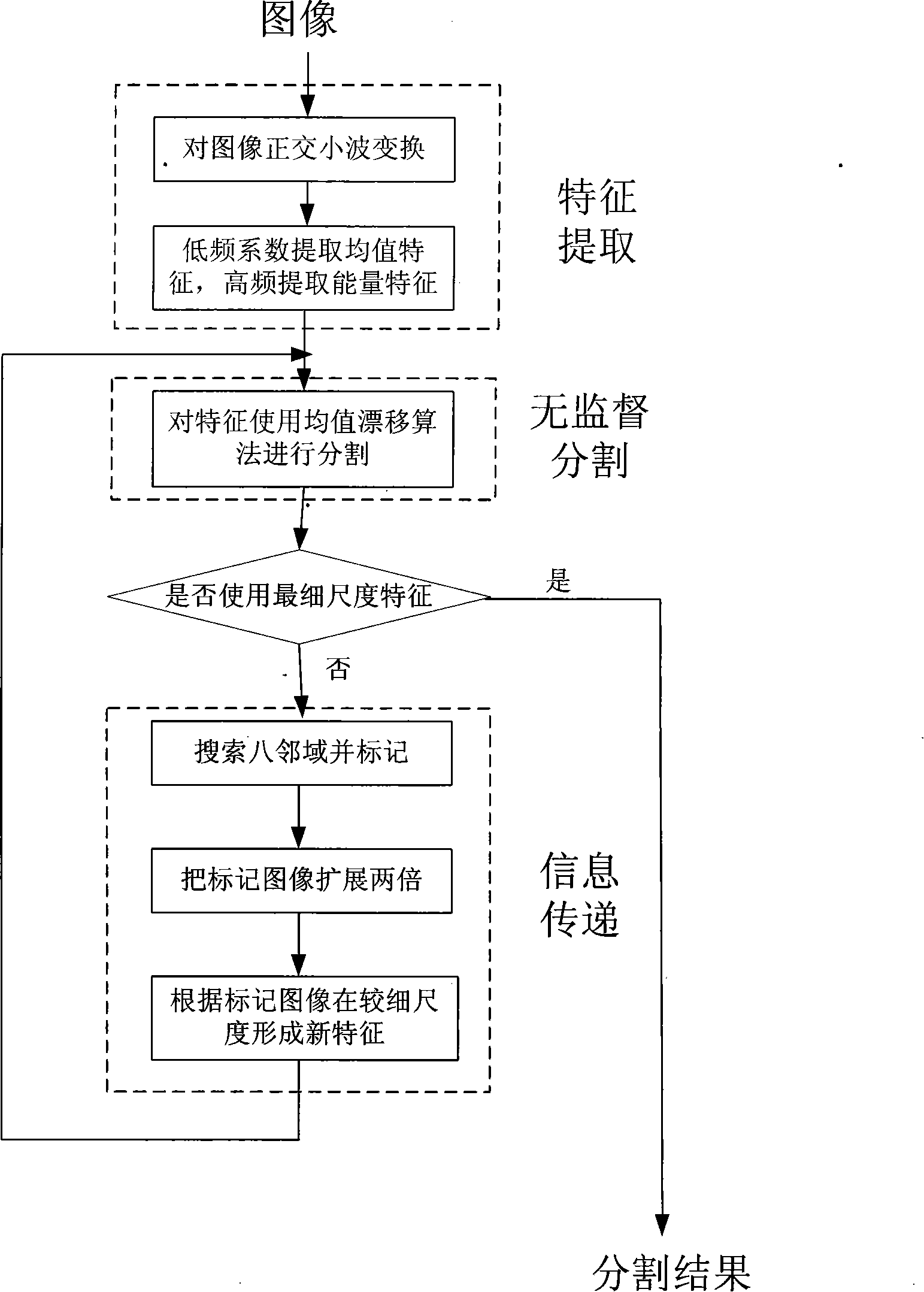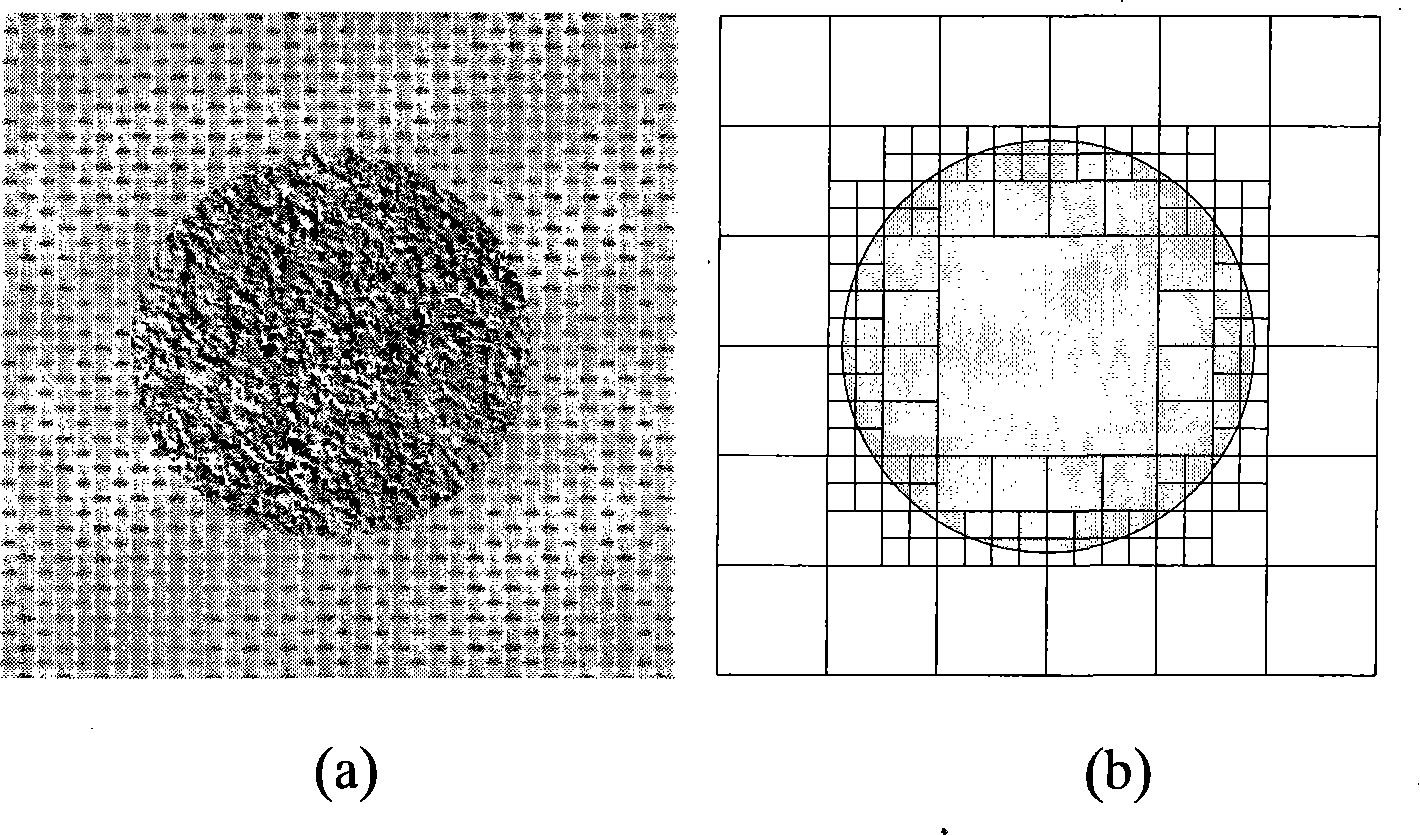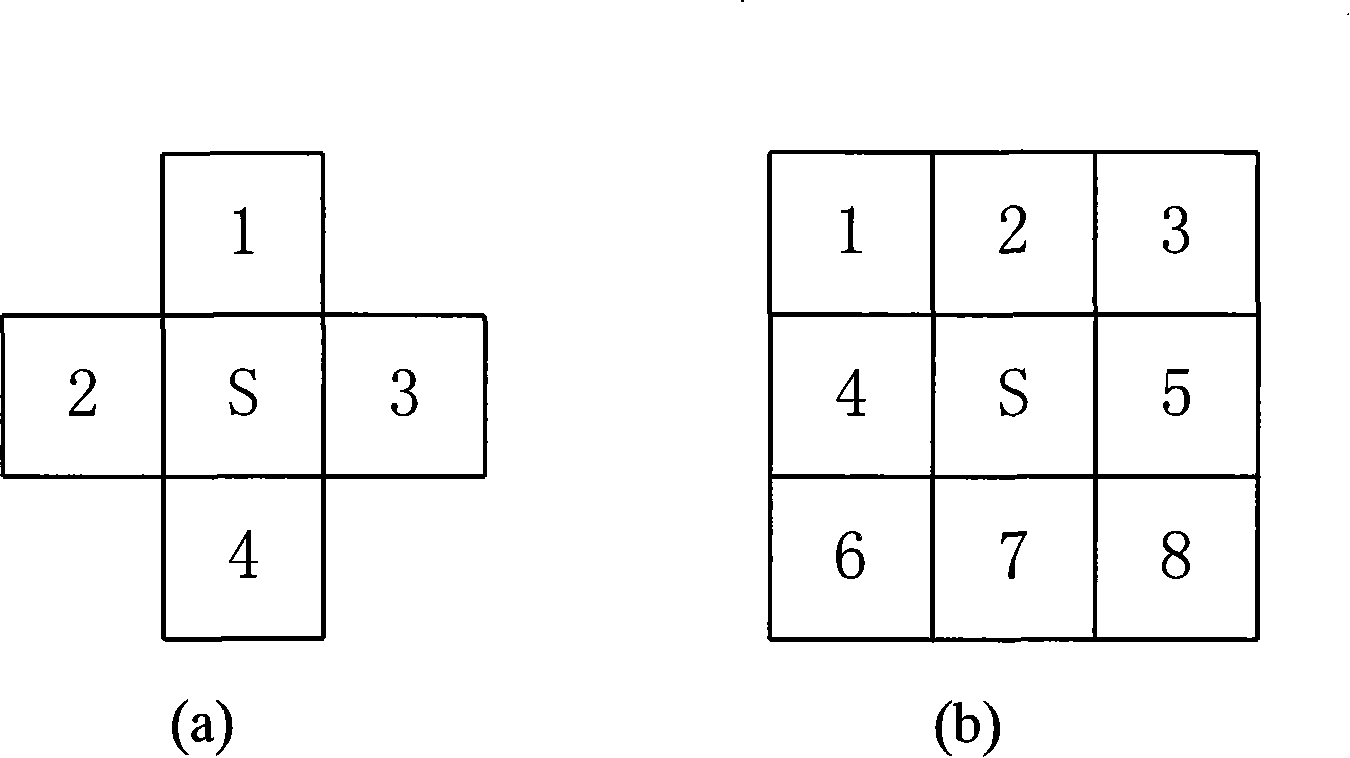Self-adapting multi-dimension veins image segmenting method based on wavelet and average value wander
A mean shifting and texture image technology, which is applied in the field of image processing, can solve the problems of texture image area consistency and adjacent area edge accuracy contradictions, and achieve the effect of reducing algorithm complexity
- Summary
- Abstract
- Description
- Claims
- Application Information
AI Technical Summary
Problems solved by technology
Method used
Image
Examples
Embodiment Construction
[0039] refer to figure 1 , which is a flow chart of the implementation steps of the present invention. First, the image is subjected to four-level wavelet transform and features of each scale are extracted, and then the mean value shift is applied to the coarsest scale feature to segment and mark; then the marked image is expanded to twice the original size , on a finer scale, replace the features marked as 0 regions with their corresponding finer-scale features. The region marked as 1 is taken as a whole, and the feature mean value in this region is used for further segmentation until the segmentation result at the highest resolution is obtained. From figure 1 It can be seen that the specific implementation process of the present invention is as follows:
[0040] 1. Feature extraction on the image
[0041] The basic idea of image feature extraction is as follows: first, four-level orthogonal wavelet transform is performed on the image to obtain three sets of coefficients o...
PUM
 Login to View More
Login to View More Abstract
Description
Claims
Application Information
 Login to View More
Login to View More - R&D
- Intellectual Property
- Life Sciences
- Materials
- Tech Scout
- Unparalleled Data Quality
- Higher Quality Content
- 60% Fewer Hallucinations
Browse by: Latest US Patents, China's latest patents, Technical Efficacy Thesaurus, Application Domain, Technology Topic, Popular Technical Reports.
© 2025 PatSnap. All rights reserved.Legal|Privacy policy|Modern Slavery Act Transparency Statement|Sitemap|About US| Contact US: help@patsnap.com



